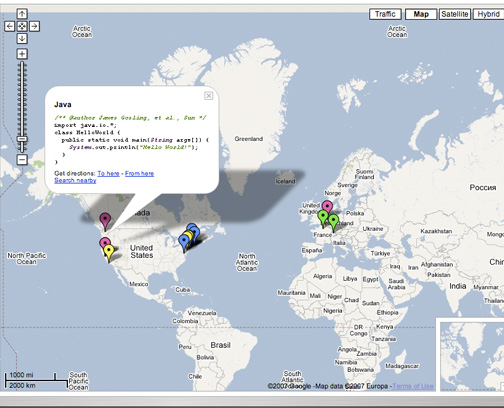Slashdot writes: Second Life To Open Source Server Code. This is an ”’excellent step! And ”’resonating with my [http://wiki.aardrock.com/LandONE LandONE]”’ perspective:
:LandONE also results in a flurry of new and serious multi-user games, to be played on-line, on game consoles, mobile phones and media centers. These games leverage the successes of games like The Sims, World of Warcraft and ”’Second Life”’ to the next level as well.
:During the first two years the game scripts are developed and implemented. For the first time in history, game providers (Sony, Nintendo, Microsoft) work together in a co-opetitive way to make sure gamers on each proprietary platform can talk to each other, and form tribes, mobs and communities.
:Game rules mirror the real socio-eco-political rules that govern LandONE, thereby making it a very serious game, a learning environment for potential citizens well as for game rule designers. As a result, game players are excellent candidates to actually migrate LandONE as soon as they have reached a certain level.
:These serious games are a journey through The Membrane. Players get used to the specifics of LandONE, like the gift economy, ”’social credit”’, ”’holacracy”’, etc. LandONE games beat online games like World of Warcraft by orders of magnitude and create wave of goodness flushing over our Earth.
:The competitive and collaborative aspects of these games are excellent inputs to exciting TV series, involving billions of eyeballs globally.
:Also, the concept or format of LandONE and its derivations can be sold to other media companies resulting in another major healing revenue stream.
Second Life To Open Source Server Code: “mrspin writes ‘Having already taken the timid steps of open-sourcing the code for its client software, Linden Lab has confirmed that they’ll be going the whole way, and will soon be opening up the server code for Second Life. This furthers Second Life’s ambitions to be a fully distributed 3D network — built on interoperability and not owned by one company — a bit like the Internet itself. ZDNet’s The Social Web asks: ‘who will be the first to offer Second Life hosting or use the server code for their own internal purposes? IBM would be an obvious candidate, perhaps offering corporate Second Life services. And for the rest of us? GoogleLife, free virtual land — ad supported of course. It’s certainly a possibility.”
Read more of this story at Slashdot.
(Via Slashdot.)


